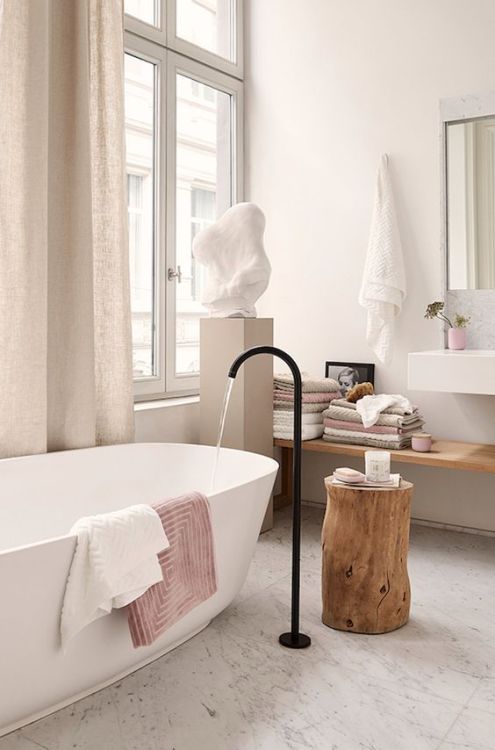5 Ways to Design a More Eco-Friendly Bathroom
This is a guest post courtesy of Matt Doyle, the Vice President and Co-founder of Excel Builders.
Having an eco-friendly home is becoming an increasingly popular trend. In addition to the greater awareness of our impact on the environment, there is also a strong financial incentive to be mindful of how your home uses resources. However, the importance of the bathroom is very often overlooked, perhaps due to its relatively small space. Here are 5 ways to design a bathroom that’s more eco-friendly.

LED Light Bulbs
Let’s start with energy use. Despite being smaller than most other rooms in your home, bathrooms usually have quite a lot of lighting, and therefore use up a lot of electricity. You can have lights around your mirror to have better light while you shave or put on makeup, in addition to another ambient lighting on the ceiling, above your shower, and so on.

With 5% of your home’s energy use coming from lights, you can save around $75 per year by switching to LED lights.There have been incredible advancements in LED lighting, both in terms of their more efficient energy use and in terms of how long they last. It’s a good idea to switch to LED lighting in your entire home, and your bathroom is no different. It can save you hundreds of dollars off your energy bill.
Ceramic Tiles
If you are trying to pick an eco-friendly option for the flooring or walls of your bathroom, recycled ceramic tiles are a good choice. They are durable — you don’t have to worry about recycled tiles being unreliable — and they effectively resist moisture damage, mold, and so on. In addition, ceramic is a very eco-friendly and sustainable material to use and can come in a large variety of great-looking designs.
Most ceramic tiles that are reused are not 100% recycled but contain anywhere from 20 to 70% recycled material — either from waste materials created in the process of making new ceramic tiles or from general manufacturing waste that would just be thrown away.
Low-Flow Toilets & Shower Heads
Did you know that around 47% of your home’s water use comes from your bathrooms? That’s because your toilet is the single largest source of water than anything else in your home (30% water use!), and your shower is the third largest. That means you can have a massive impact on cutting your water use — and therefore your water bill — by switching your toilet and shower head to low-flow versions.
For shower heads, most homes will have some that use around a 2.5 gallons-per-minute model, but you can look for shower heads with a WaterSense label, certified by the EPA to be 2.0 gallons-per-minute or better. They aren’t very expensive either. You can find low-flow toilets with the WaterSense label too, although how much you save on water use depends on how efficient your old toilet was. Flush Guide has some great toilet recommendations so check them out: flushguide.com
Motion Sensor Faucets
Your bathroom faucets don’t use as much water as your toilet or shower, but can be very wasteful too. How often do you leave the tap running while you’re in the middle of brushing your teeth, shaving, applying makeup, or cleaning the sink? You can install bathroom faucets that are motion sensor-activated to help prevent any excess waste. The environment, your neighborhood’s water provider, and your water bill will all thank you.
Eco-Friendly Piping
One final way to make your bathroom more efficient and eco-friendly in its water and energy use is by installing the right size and type of piping. Make sure you pick the right size to get the best water pressure in your shower, bath faucet, toilet, and sink.
You can get pipes made from steel or polyethylene that are highly durable and long-lasting, so you won’t lose as much water on leaks and waste, and they are also better at retaining heat when you draw hot water. That means you don’t just save on water, but on the energy used to make hot water as well.
About the Author:Matt Doyle is the Vice-President and Co-Founder of Excel Builders, a custom home building company serving Delaware and Maryland. The company specializes in ICF and custom-built, energy efficient homes. Matt grew up in the construction industry and he has a Bachelor of Science degree in Entrepreneurship from the University of Alabama. He also has an extensive background in internet marketing and has worked with some well-known international companies such as Best Western, McGraw Hill Construction, Sharp, and Canon.












